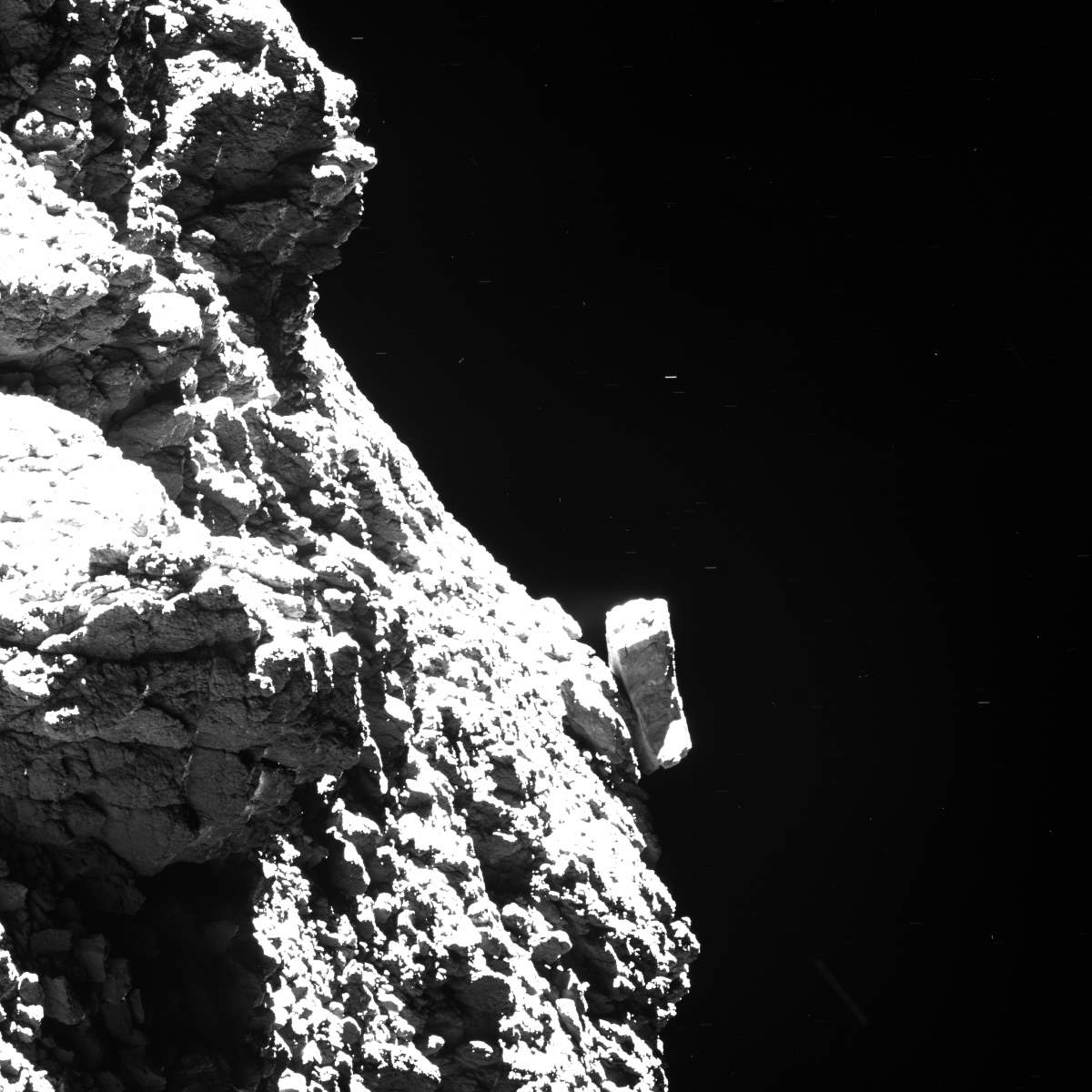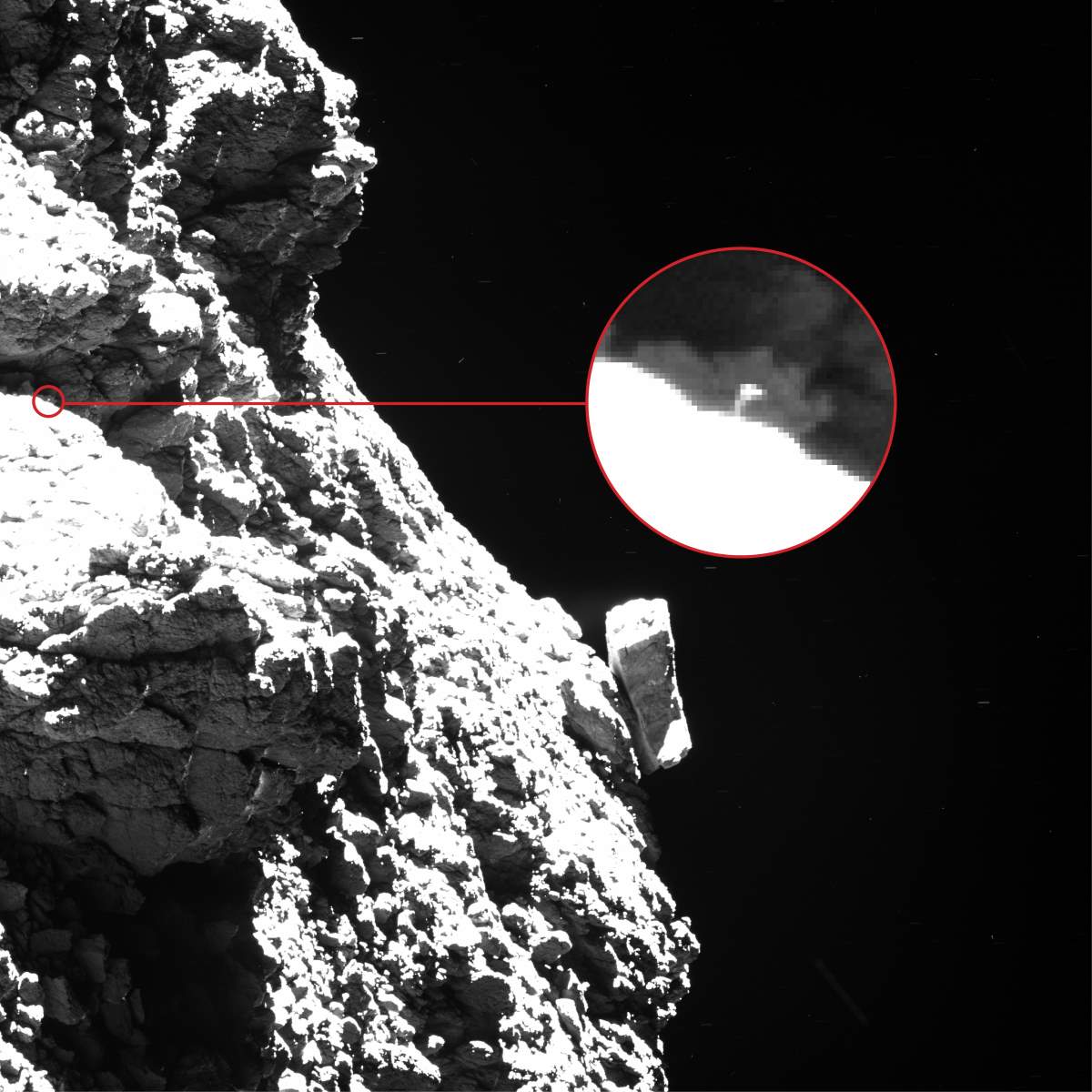European Space Agency (ESA) has published the complete Rosetta image archive under a Creative Commons license, which means the complete archive is freely available: you can copy, share, and tweak the content.
ESA also published a video titled “Rosetta’s final images”, saying: “Enjoy this compilation of with the last images taken by Rosetta’s high-resolution OSIRIS camera during the mission’s final hours at Comet 67P/Churyumov-Gerasimenko. As the spacecraft moved closer towards the surface, it scanned across an ancient pit and sent back images showing what would become its final resting place.”
Holger Sierks, the principal investigator of the OSIRIS (Optical, Spectroscopic, and Infrared Remote Imaging System) camera, has said that: “Having all the images finally archived to be shared with the world is a wonderful feeling. We are also pleased to announce that all OSIRIS images are now available under a Creative Commons license.”


Philae was a robotic European Space Agency lander that accompanied the Rosetta spacecraft until it separated to land on comet 67P/Churyumov–Gerasimenko, ten years and eight months after departing Earth. On 12 November 2014, Philae touched down on the comet, but it bounced when its anchoring harpoons failed to deploy and a thruster designed to hold the probe to the surface did not fire. After bouncing off the surface twice, Philae achieved the first-ever “soft” (non-destructive) landing on a comet nucleus, although the lander’s final, uncontrolled touchdown left it in a non-optimal location and orientation.
Despite the landing problems, the probe’s instruments obtained the first images from a comet’s surface. Several of the instruments on Philae made the first direct analysis of a comet, sending back data that will be analyzed to determine the composition of the surface.
On 15 November 2014 Philae entered safe mode, or hibernation after its batteries ran down due to reduced sunlight and an off-nominal spacecraft orientation at its unplanned landing site. Mission controllers hoped that additional sunlight on the solar panels might be sufficient to reboot the lander. Philae communicated sporadically with Rosetta from 13 June to 9 July 2015, but contact was then lost.
The lander’s location was identified to be within a few tens of meters, but it was not seen. Philae, though silent, was finally identified unambiguously, lying on its side in a deep crack in the shadow of a cliff, in photographs taken by Rosetta on 2 September 2016 as the orbiter was sent on orbits closer to the comet. Knowledge of its precise location will help in the interpretation of the images it had sent. On 30 September 2016, the Rosetta spacecraft ended its mission by crashing in the comet’s Ma’at region.
The lander is named after the Philae obelisk, which bears a bilingual inscription and was used along with the Rosetta Stone to decipher Egyptian hieroglyphs.
Rosetta Probe
Rosetta was a space probe built by the European Space Agency. It was launched on 2 March 2004. Along with Philae, its lander module, Rosetta is performing a detailed study of comet 67P/Churyumov-Gerasimenko (67P). During its journey to the comet, the spacecraft flew by Mars and the asteroids 21 Lutetia and 2867 Šteins.
On 6 August 2014, the spacecraft reached the comet and performed a series of maneuvers to be captured in its orbit. On 12 November 2014, Rosetta soft-landed its Philae probe on the comet, the first time in history that such an extraordinary feat has been achieved.
Though Philae’s battery power ran out two days later, because it landed oddly, likely in the shadow of a nearby cliff or crater wall, and canted at an angle of around 30 degrees. This made it unable to adequately collect solar power, and it lost contact with Rosetta when its batteries ran out after two days, well before much of the planned science objectives could be attempted. Contact was briefly and intermittently reestablished several months later at various times between 13 June and 9 July, before contact was lost once again.
There has been no communication since, and it is highly unlikely that Philae will communicate with ESA again. Communications with Philae were briefly restored in June and July 2015, but due to diminishing solar power, Rosetta’s communications module with the lander was turned off on 27 July 2016. On 30 September 2016, the Rosetta spacecraft ended its mission by hard-landing on the comet in its Ma’at region.
In the mission’s last hours as Rosetta moved even closer towards the surface of the comet, it scanned across an ancient pit and finally sent back images showing what would become its resting place. Even after the spacecraft was silent, the team was able to reconstruct one last image from the final telemetry packets sent back when Rosetta was within about 20 meters (65 feet) of the surface.
The probe is named after the Rosetta Stone, a stele of Egyptian origin featuring a decree in three scripts. Found in 1799, the Rosetta Stone was inscribed with three versions of a decree issued at Memphis, Egypt in 196 BC during the Ptolemaic dynasty on behalf of King Ptolemy V. The top and middle texts are in Ancient Egyptian using the hieroglyphic script and Demotic script, respectively, while the bottom is in Ancient Greek, which is already deciphered by the historians. As the decree has only minor differences between the three versions, the Rosetta Stone proved to be the key to deciphering Egyptian hieroglyphs.
Sources
- Complete Rosetta Image Archive on European Space Agency (ESA) website
- “The Rosetta Image Archive Is Now Complete and Freely Available, so You Can See a Comet Like Never Before” on Gizmodo
- Rosetta spacecraft on Wikipedia
- Philae spacecraft on Wikipedia
- Space Shuttle Endeavour’s Touchdown Meets Columbia’s Salute [An amazing photo from the past] - February 29, 2024
- Moon Landings: All-Time List [1966-2024] - February 23, 2024
- From Orbit to Ordinary: 10 Earthly Applications of Space Technology - January 23, 2024

